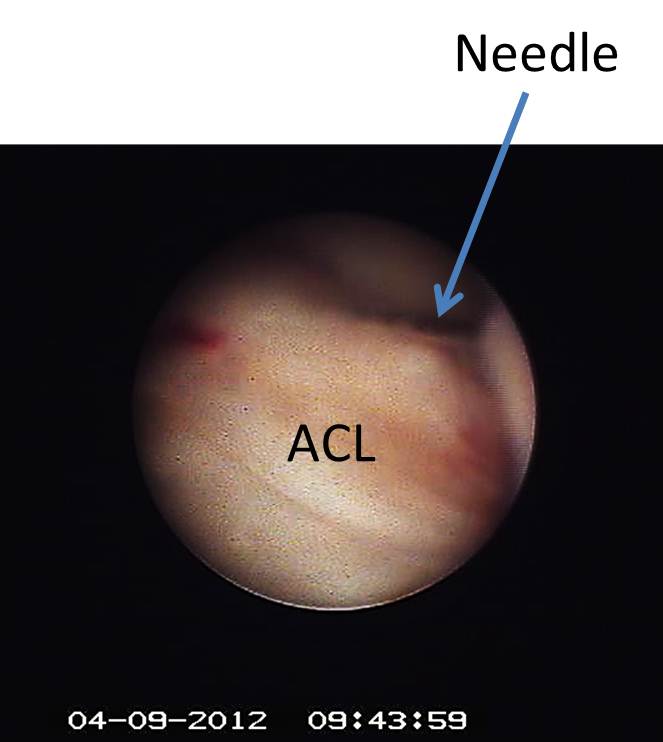World’s First Regenerative Medicine injection under Direct Visualization with Needle Arthroscope
First Arthroscopic Regenerative Medicine Injection… We are proud to announce what we understand to be the world’s first injection of regenerative therapies into a knee ACL under direct visualization through a needle arthroscope. This marks another significant step in offering our patients knee acl surgery alternatives. Also, in keeping with our orthopedics 2.0 philosophy, we continue to push the limits of what’s possible through a needle. In this case we were looking through a needle (needle arthroscope) while another needle came from the other side of the knee and was directed into the ACL. The goal is to improve patient outcomes, as this patient’s MRI suggested there may be no intact ACL fibers, but direct visualization of the ACL under needle arthroscopy showed that while the ACL was loose, it was intact. Our goal now is to tighten the ligament without surgery and specifically avoid ripping out perfectly viable ACL fibers. We’ve had very good experience with tightening ACL ligaments without the need for surgery because of our ability to use various imaging technologies to ensure we’re directly in the ligament. I just posted on a grade 3 knee ACL ligament that shows good repair after the injection of the patient’s own stem cells into the ligament. The upshot? Our goal is nothing less than re-inventing orthopedic care so that more and more procedures can be performed through a needle with minimal downtime.

If you have questions or comments about this blog post, please email us at [email protected]
NOTE: This blog post provides general information to help the reader better understand regenerative medicine, musculoskeletal health, and related subjects. All content provided in this blog, website, or any linked materials, including text, graphics, images, patient profiles, outcomes, and information, are not intended and should not be considered or used as a substitute for medical advice, diagnosis, or treatment. Please always consult with a professional and certified healthcare provider to discuss if a treatment is right for you.

